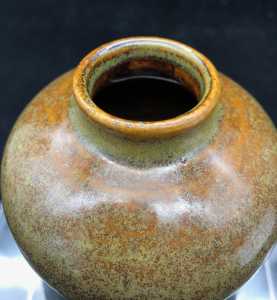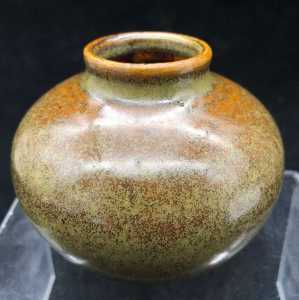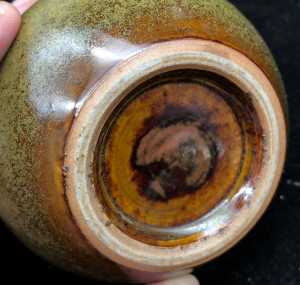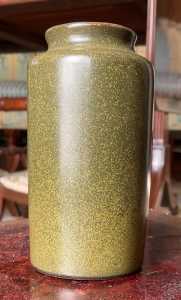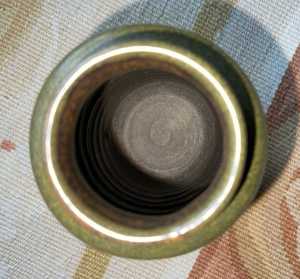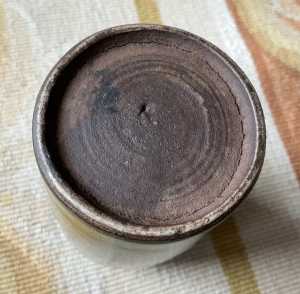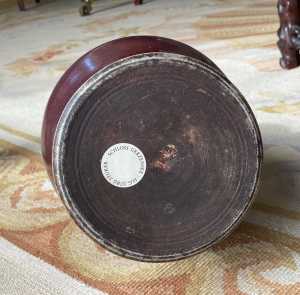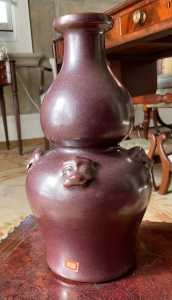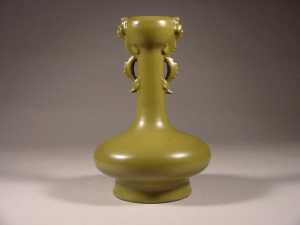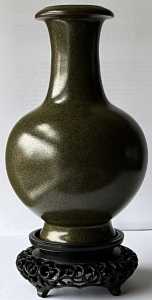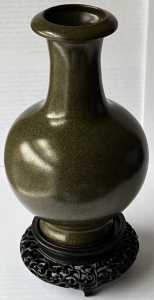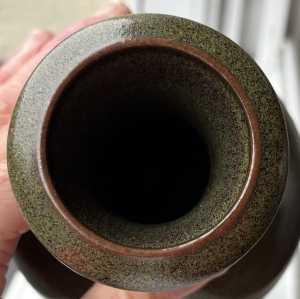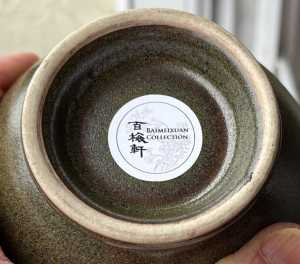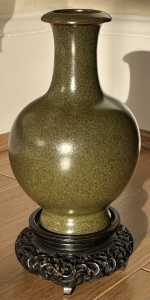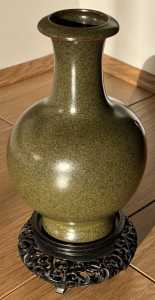The Chinese and Asian Art Forum. For Fans, Collectors and Dealers.
 Basic Rules For the BidAmount Asian Art Forum: Talk about whatever you want. You can even discuss and offer things that are for sale if they are authentic. Maximum image file size per post is 2 MB. Images of 700pxl x 700pxl are optimal if saved at a medium resolution. Be respectful of others and enjoy yourself. Click the YouTube link for a brief tutorial on using the forum. You can also EMBED Videos by cutting and pasting from You-Tube, Vimeo etc.
Basic Rules For the BidAmount Asian Art Forum: Talk about whatever you want. You can even discuss and offer things that are for sale if they are authentic. Maximum image file size per post is 2 MB. Images of 700pxl x 700pxl are optimal if saved at a medium resolution. Be respectful of others and enjoy yourself. Click the YouTube link for a brief tutorial on using the forum. You can also EMBED Videos by cutting and pasting from You-Tube, Vimeo etc.
NOTE: To post an item or add a new post, click open the category title from the FORUM LIST, and CLICK the Blue ADD TOPIC button.
Hey Folks,
A bunch of things came in today, some I've been waiting on for a while and some are recent buys but I have anxiously awaited them... This was one of them.
I think the glaze looks pretty darn good. I know very little about teadust wares, but I do know there should be a decent luster and a blown on surface appearance. Curious if anyone has any tea dust pieces, could hazard a guess at the age? Purely judging the foot and the paste mostly I would guess 19th century or late 18th, but I have know real idea if the paste is consistent on these.
Anything helps, though I think it'll look great with my other funky glazes either way.
Cheers,
Jeremy
Hi Jeremy,
I needed a sunny morning for my photos before I could respond. I would say your little jar is teadust, but it seems a little patchy in its glaze effect. From the photos, I would guess it has some age but I have difficulties judging age from pictures.
Here are some photos of my small teadust vase that was sold to me as early 18th century from a New York dealer in the 1980s
One general rule I can pass on after looking at numerous examples over the years is the earlier 18th century examples of teadust tend to have darker greenish glazes while later 19th century examples seem to have a lighter mustard color to the glaze.
Hey William,
Thanks for posting your lovely jar! the color of yours and that foot definitely looks 18th century.
I have been going over a bunch of the teadust wares in the Gotheborg archives, many of which are analyzed by Mike Vermeer, and it seems the brighter the greens the earlier, then came a darker green with brighter spots(dust), and then that more monochromatic darker green. As for the bases they seem to be either dark brown washed or green on the earlier ones, then up until Daoguang period or so, the caramel brown underside (I think mine falls into that range somewhere), then a dark kind of matte brown or just the same glaze as the rest. These "rules" don't seem to apply at all to the Imperial marked pieces, which I won't even begin to understand.
Not sure if I got much of that right, but I definitely noticed that the real teadust ones pop or are vibrant, Mike said "have a luster". Yours certainly hits all the marks for those earlier ones.
This area is new to me, but I have looked at them a lot and read up on them a lot, and seen museum collected ones a lot, just hadn't really come across an old one for sale at a reasonable price before.
Thanks again.
Jeremy
I answered as you posted that one... Awesome glaze, and from a great collection. Was that in the 1989 sale? there were some really nice Kangxi pieces in that sale. I had a small 16th century drawing from the the Jurg Strucker collection, and somewhere in my 30 shelves of catalogs I have the 1989 sale, doubt I'll find it, but I'll look.
These blown on dusted type glazes certainly intrigue me. A number of years ago I stumbled upon the collection of monochromes at the National Gallery of Art here in DC, and there is literally nothing like having your nose six inches away from a powder blue vase or a peach bloom amphora. I feel bad that the janitor probably had to come by after I left and remove my nose smudges from the glass on the cases.... Unfortunately its been out of the public eye for a while now, but I guess I just wandered in on the right day.
Cheers,
Jeremy
Mike was crazy about teadust. When he moved to Atlanta, I came to visit and saw his crazy large collection of Chinese ceramics. His teadust items were in a big glass fronted cabinet. I have often wondered what happed to his prized Imperial teadust vase. He called it the Griggs Vase. Mike wanted to write a book pulling together his knowledge about the history of the glaze, but never got around to doing it and then got too sick. Gotheborg is probably the only site that still holds his writings on the subject.
I bought the iron rust vase from Jan Beer (if I remember his name correctly) in London probably about five years after that sale. It was tucked inconspicuously away downstairs in a case. I spotted it and said to myself “That’s for me!”
I love that National Gallery Chinese porcelain collection from some gilded age robber barons. It is tucked away downstairs in the old building and is practically forgotten. Most everything is on display in old fashioned cases when I was last in Washington. Being a federal museum, I don’t think some damn curator can send it off to auction to cash in on an off topic (not paintings) collection.
Hi Jeremy and William -
Tea-dust glazes were fully developed in early Qing, the tones of such been highly sensitive to minute changes during firing. Such glazes were called ‘Changguan you’, (Factory glaze), by the potters at the Imperial kilns, and includes three variants, ‘eel-yellow, snake-skin green yellow mottles’ …
Attached images of a vase with wide everted rim, early 18th century, probably Yongzheng period, H. 17.6 cm, BD. 5.8 cm, acquired many years ago …
Unfortunately no sun here today, so somewhat difficult to photograph the glaze tone accurately …
Stuart
Hey Stuart,
Lovely example and what a great glaze. Is there a reign mark hidden under the sticker? That glaze and the form look almost perfect.
I can't recall where ( may have been one of Mike Vermeer's posts), but I read the official kilns at Jingdezheng started producing these teadust wares in the early Yongzheng period, it seems that was when a lot of this experimental glaze techniques started. The National Palace Museum also has a ton of crazy monochromes in colors I doubt I'll ever see in person, and most are dated to Yongzheng.
Cheers,
Jeremy
I did find an interesting patchy looking teadust/"Eel-skin" pot on Christie's site. Really interesting form and coloration.... Kind of reminds me of the shades of my jar, obviously wayyyyyy better quality, and much older.
Hey William,
I am super jealous you got to see the collection in person, and the teadust case.... he posted a picture on the Gotheborg forum, it must have been mind blowing. I don't recall seeing the Grigg's vase in either of the Brunk sales (those were horrible in so many ways, split pairs especially, and the lack of descriptions eesh).... I too wonder where it ended up. On a side note a number of copies of that vase have turned up over the last few years at the majors, rather interesting considering the amount of research Mike did and still found no others, I assume those are all fakes.
As for the National Gallery, yup that was my childhood, the old museums, many of which are getting redone, kind of a bummer, I love the hidden away gems. I doubt any of those will ever get sold off, but they may stay in storage for a long time.
Jeremy
I could just kick myself for not taking pictures of what I saw during my visit to Mike’s house. It was one of those 1990s McMansions in a suburban bedroom community just outside of Atlanta. That three story house was packed to the brim with Chinese porcelain, stoneware & pottery numbering in the thousands. On the ground level Mike had made an attempt to keep the porcelain contained in display cases and table top surfaces. An upstairs spare bedroom contained most of his 18th century Lang Yao vases and a display of Mark & Period Imperial wares along the walls of the unfurnished room. These were the things he wanted to eventually display on individual pedestals under protective glass. The house had a multi-room basement accessed by a set of stairs that had gotten utilized as additional storage for porcelain that at the time I hoped wasn’t excessively valuable. In the basement rooms he had set up multiple eight foot long tables in garage sale fashion to hold more of his collection. Corey, Tim, John and all of you other pickers would have fallen down in a fit of ecstasy in front of those crowded tables. I remember casually picking a white Ming stemcup that had hidden decoration when held to the light. It would have taken shopping carts to empty those rooms! I also remember peeking into an unfinished crawl space that had a ledge packed with hundreds (300?) of miniature vases in a rainbow of monochrome colors.
His website probably showed one tenth of his collection. I know Christies came down after he died and cherry picked what they wanted to sell. I suspect his sister or her representatives didn’t access his extensive research records, because I know mistakes were made, particularly at the later “second tier” Brunk sale. Certain pieces might have been privately disposed of during the estate settlement because I was on the lookout for certain things that he had especially prized that never made it to any of the auctions.
Hi Jeremy-
No, the base has no reign mark. The body has one small glaze pit and some light scratches, but these can only be seen when examined closely. The glaze is beautiful controlled, finishing in a tight circler line just above the outer footrim …
Sun this morning, attached images taken to show the mottled colour tones, glaze depth and brown edges around the inner mouth rim/everted outer edge …
Just to clarify, this is a high fired crystalline glaze. Numerous iron and magnesium particles react with silicate acid and are suspended on the glaze surface, the formation of which depends on the recipe/percentages of the the different metals and particle sizes.
The firing temperature, atmosphere within/during and the duration of the cooling process are also critical to the eventual outcome …
Stuart
@ming1499,
Its absolutely stunning.....i really like it very much.
Is that sticker yours?
Mark
Hi Mark -
Thank you for your kind words, much appreciated!
Yes, that is my collection label ...
Regards my friend,
Stuart
Thanks for visiting "The BidAmount Asian Art Forum | Chinese Art"
If you sell on eBay, or have a shop feel free to post images and descriptions and links.
Check back often for discussion about the latest news in the Chinese art and antique world. Also find out about the latest Asian art auctions at Sotheby's, Christie's, Bonhams and Tajans.
Auction results for: fine porcelain, ceramics, bronze, jade, textiles and scholar's objects. As well as Japanese, Thai, Vietnamese and other Asian cultures.
Thank you,
Peter Combs
Topics and categories on The BidAmount Asian Art Forum | Chinese Art
Kangxi vases, Kangxi dishes and chargers, Kangxi ritual pieces, Kangxi scholar's objects, Qianlong famille rose, Qianlong enamels, Qianlong period paintings, Qianlong Emporer's court, Fine porcelain of the Yongzheng period. Chinese imperial art, Ming porcelain including Jiajing, Wanli, Xuande, Chenghua as well as Ming jades and bronzes.
The BidAmount Asian Art Forum | Chinese Art
A free Asian art discussion board and Asian art message board for dealers and collectors of art and antiques from China, Japan, Korea, Thailand, Cambodia, Vietnam and the rest of Asia. Linked to all of the BidAmount Asian art reference areas, with videos from plcombs Asian Art and Bidamount on YouTube. Sign up also for the weekly BidAmount newsletter and catalogs of active eBay listing of Chinese porcelain, bronze, jades, robes, and paintings.
The art of calligraphy - and for the ancient Chinese it certainly was an art - aimed to demonstrate superior control and skill using brush and ink. Calligraphy established itself as one of the major Chinese art forms during the Han dynasty (206 BCE - 220 CE), and for two millennia after, all educated men were expected to be proficient at it.
The Museum’s collections of Asian art span nearly five millennia and encompass the cultures of China, the Himalayas, India, Japan, Korea, and Southeast Asia. In 2007, the Museum launched an initiative to create dedicated galleries for the collection, beginning with a gallery for the arts of Korea ...
Chinese art is full of symbolism, in that artists typically seek to depict some aspect of a totality of which they are intuitively aware.
China Online Museum is the finest online museum of Chinese art. It features Chinese calligraphy, painting, ceramics, bronzes, carving, and other artworks.
Chinese Ceramics & Works of Art. Overview Upcoming auctions Contacts Auction results ... Christie’s sales of Chinese ceramics and works of art showcase centuries of Chinese history. Held throughout the year in London, New York, Paris and Hong Kong, they attract a wide audience of collectors and connoisseurs vying for pieces as diverse as ...
Explore Asian Art Week. Contact the Specialist Department. Chinese Paintings ... Senior Specialist, Head of Sale. [email protected]. Tel:+1 212 641 5760. Bid in-person or online for the upcoming auction:Fine Chinese Paintings on 10 September 2019 at New York. Bid in-person or online for the upcoming auction:Fine Chinese Paintings on 10 ...
Discover an abundance of must-see art from all corners of a vast continent at Christie’s NY Asian Art Week. From contemporary classical and Chinese paintings to works with exemplary provenance from the Art Institute of Chicago, our Rockefeller Paza galleries will be full of ancient treasures and contemporary masterworks in a salute to the vibrant arts of Asia.
Sold to benefit The Art Institute of Chicago’s Asian Art Acquisition Fund, the sale features 84 lots with a focus on Ming and Qing porcelains, and offers a rare insight into the taste for collecting Chinese ceramics and works of art in the Midwest from the end of the 19th century through the 1980s. Highlights include two Wanli wucai garlic-head vases, a Qianlong mark and period, blue and ...
Specialist, Chinese Paintings, Christie's London Dr Malcolm McNeill is a Specialist in Chinese Paintings at Christie’s, based in London. He previously worked as an assistant curator of the Chinese collections and the Victoria and Albert Museum in London, as a researcher at the British Museum, and as a translator and tour guide at the National Palace Museum in Taipei.
The Christie's Education 2020 Conference: The Chinese Art Market 18 Jun 2019 Christie’s Education is delighted to announce our first international academic conference in Asia which will take place in Hong Kong from 26-27 November 2020 at the Hong Kong Convention and Exhibition Centre and will run in parallel with Christie’s Hong Kong Autumn Auctions.
The summer Chinese Art sale in Hong Kong will feature works of art from several private collections, including Qing porcelains and textile from the collection of the legendary Chinese art dealer A. W. Bahr (1877–1959), fine gilt bronze Buddhist sculptures from an old Hong Kong collection, an East Asian collection of Qing dynasty wine cups and jades, and a Japanese collection of Song ceramics ...
Sotheby's Chinese Works of Art Department holds two auctions each year in London, New York, Hong Kong and Paris.
Chinese Art - View Auction details, bid, buy and collect the various artworks at Sothebys Art Auction House.
With more than 340 Chinese works of art dating from the Neolithic to the Republic periods, highlights of this sale include a selection of Qing Imperial monochromes from the collection of Arnold and Blema Steinberg, early ceramics from the Art Institute of Chicago and Chinese porcelain and works of art from the collection of Henry Arnhold.
Results: Sotheby's Asia Week achieved $52.4 million in six strong auctions, exceeding pre-sale estimates. With 76.5% of lots sold and 60.3% of lots surpassing high estimates, the Asian art sales at Sotheby's indicate continued collector interest in the finest works of art from China, India and and the Himalayas.
Today's sale of Important Chinese Art will proceed as planned with sessions at 10 AM and 2 PM EDT. Sotheby's will be monitoring the weather conditions throughout the day and will be available to coordinate alternative bidding options should conditions make it difficult for clients to attend the auction in person.
Bonhams Chinese Art department is renowned for offering the finest works of art representing the richness and breadth of China's artistic heritage, particularly Imperial porcelain, white and spinach green jades, cloisonné and Buddhist art. Specialised international auctions are held globally, including London, Hong Kong and San Francisco.
Bonhams : Chinese Works of Art We use cookies to remember choices you make on functionality and personal features to enhance your experience to our site. By continuing to use our site you consent to the use of cookies. Please refer to our privacy and cookie policies for more information.
Bonhams Fine Art Auctioneers & Valuers: auctioneers of art, pictures, collectables and motor cars. We use cookies to remember choices you make on functionality and personal features to enhance your experience to our site. By continuing to use our site you consent to the use of cookies. ... Chinese Art (US) General enquiries
Bonhams : Fine Chinese Art We use cookies to remember choices you make on functionality and personal features to enhance your experience to our site. By continuing to use our site you consent to the use of cookies. Please refer to our privacy and cookie policies for more information.
Bonhams Fine Art Auctioneers & Valuers: auctioneers of art, pictures, collectables and motor cars Bonhams : Asian Art We use cookies to remember choices you make on functionality and personal features to enhance your experience to our site.
Bonhams are international auctioneers of fine Chinese and Japanese art. We specialise in rare Imperial and Export Chinese ceramics and works of art, as well as Japanese ceramics, fine and decorative works of art from the Neolithic Period to the 20th century. View on map
Bonhams Fine Art Auctioneers & Valuers: auctioneers of art, pictures, collectables and motor cars. We use cookies to remember choices you make on functionality and personal features to enhance your experience to our site. By continuing to use our site you consent to the use of cookies. ... Asian Art Bonhams. Work. 22 Queen St.
